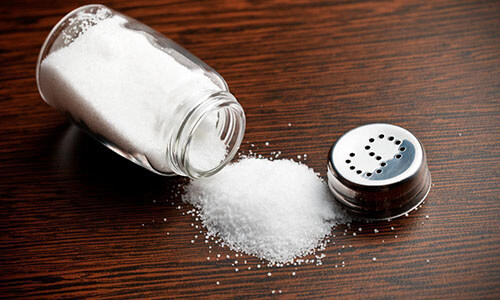
A low-sodium diet is often recommended as a way to manage your hypertension. Major health organizations suggest eating no more than 2,300 milligrams of sodium per day, and in some cases fewer than 1,500 milligrams, if you have high blood pressure.
Consuming lots of sodium from table salt and processed foods increases the concentration of sodium in your bloodstream. This makes your body hold onto water, which increases your blood volume and ultimately can make your blood pressure higher.
Reducing your sodium intake isn’t the only way to promote good health and keep control of your hypertension though. Try these other strategies, too.
Whole vegetables and fruits contain fiber, potassium, and magnesium, all of which may prove important in controlling your blood pressure. Research shows that high-fiber diets are associated with lower blood pressure.
When you prepare vegetables, salads are a great option. Toss lettuce and raw veggies with a homemade dressing of lemon juice and olive oil.
Roast root vegetables with rosemary and olive oil. Steam broccoli, cauliflower, or snap peas and top with fresh herbs like marjoram and basil.
Skip the bottled juices though, because they’re missing the fiber found in whole produce. Vegetable juices, which are very high in sodium, are also best left on the shelf. Also stay away from canned veggies, frozen vegetables with sauce, and bottled salad dressings, as they have a lot of sodium.
Magnesium helps your blood vessels relax, which helps keep your blood pressure lower. Lean meats, such as white meat poultry and pork, contain magnesium, as do nuts and seeds, and dark, leafy green vegetables. Other sources include beans, whole grains, and raw wheat germ. Men who consume adequate amounts of this magnesium have consistently lower blood pressure.
Potassium is a mineral that helps balance the sodium levels in your blood. Fruits and vegetables to focus on to get more potassium are avocados, spinach, mushrooms, bananas, and potatoes. Yogurt and seeds, such as sunflower and pumpkin, are other potassium-rich foods.
Eating too much-added sugar and refined carbohydrates leads your body to release increased amounts of the hormones insulin and leptin. Increased production of insulin can lead to insulin resistance, which makes it harder for cells to store magnesium. As a result, you have less magnesium which leads to constriction of blood vessels -- and higher blood pressure.
Opt for fresh fruit instead of baked goods and ice cream for dessert. Trade soda for water and unsweetened tea and coffee.
Red meat tends to contain more cholesterol and saturated fat, which can negatively affect your heart health and blood pressure. Choose vegetarian protein options more often, such as beans and lentils. Fish and white meat poultry are other good options to keep your heart health, and hypertension, in check.
Consuming more than three drinks in one sitting temporarily raises your blood pressure. If you drink that much often, it can result in long-term high blood pressure. Reduce your intake of alcohol, or cut it out altogether. A reasonable, moderate amount of alcohol equals two drinks per day for men younger than 65, and one drink a day for men older than 65 and women of any age.
Pure Medicine
4645 Avon Lane, Suite 200
Frisco, TX 75033
Phone:
(469) 414-9660